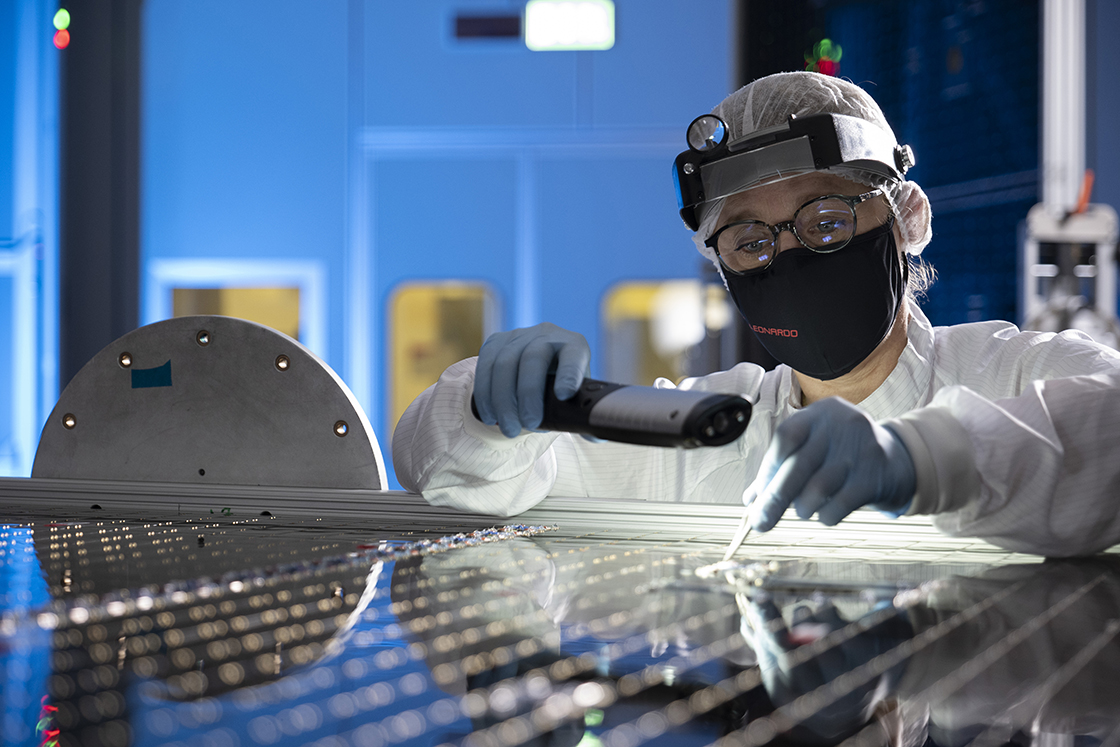A delegation of representatives from NASA, ESA, Airbus and Lockheed Martin is delivering in person to the various companies that worked on the Artemis 1 mission the appreciation of the leading partners in the new space adventure that will return human beings to the Moon. In recognition of the professionalism displayed by everyone involved in the project, awards were presented to the 80 Leonardo employees from the Nerviano (Milan) plant who contributed to the mission’s success.
The National Aeronautics and Space Administration (NASA) developed the programme in partnership with the European Space Agency (ESA) to return us to our satellite, this time for good. But also to look beyond, towards Mars. The mission blasted off on 16 November 2022 from the Kennedy Space Center using the new launch system (SLS), sending the Orion spacecraft on its journey. Orion performed a 25-day mission that involved two close flyovers of the Moon. The vehicle completed its planned tests, passing just 130 km above the lunar surface, trying out all its systems and verifying their reliability ahead of a manned flight. Orion returned to Earth, splashing down in the Pacific Ocean on 11 December.

© NASA-Joel Kowsky
Besides the capsule that will accommodate the astronauts during the journey, Orion carries the ESA’s European Service Module (ESM), which will provide future travellers with electricity, propulsion, temperature control, air and water. Nerviano gave birth to the vital heart of the ESM, the photovoltaic (PVA) panels that comprise the module’s four wings. They measure seven metres each and can supply around 11kW to power the onboard electronics. The Lombardy site also produces electronic units (PCDUs) that control and distribute energy to the spacecraft.

© NASA
As well as presenting awards to employees, during the Victory Tour, the delegation visited the Nerviano site’s technical areas and saw the birthplace of the technologies that contributed to the mission’s success.
Giovanni Fuggetta, SVP Divisional Space Business at Leonardo, who supervised the delegation’s visit to Nerviano, said, “the return to the Moon is a challenge that, as Leonardo, we have embraced enthusiastically, and we are delighted that our partners appreciate and recognise our skills and technologies. We are proud to be part of this new page in space exploration with NASA and the European Space Agency.”

Work at photovoltaic panels at Leonardo Nerviano site
Italy played a significant role in Artemis I through the contribution of the Italian Space Agency (ASI). It will be a leading player in its development and in the international drive towards a permanent human presence on the Moon and the upcoming journey to Mars. At the industrial level, Leonardo and the joint ventures Thales Alenia Space (Thales 67%, Leonardo 33%) and Telespazio (Leonardo 67%, Thales 33%) provide a range of distinctive skills in the fields of infrastructure, robotics, artificial intelligence and connectivity.

